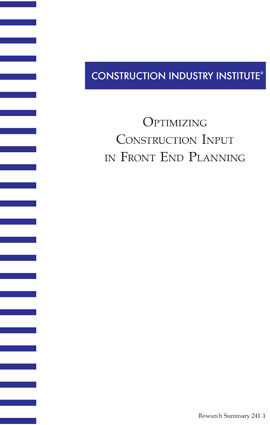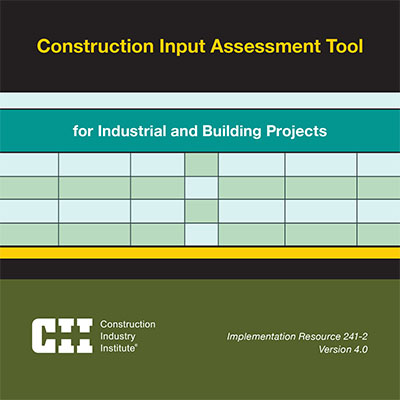
Optimizing Construction Input in Front End Planning
Many projects do not include adequate construction input during front end planning (FEP), resulting in projects falling short of their goals. Historically the primary stakeholders in a project (i.e. owners, designers, and constructors) are not aligned and tend to operate in their own domains. As a result the needed collaboration is not obtained and projects do not achieve the level of success that is possible.
CII established the Optimizing Construction Input in Front End Planning Research Team to investigate the problem and determine ways in which construction input can be optimized during the front-end stage of projects. The research shows a strong and indisputable correlation between early construction input and project success.
CII has emphasized the use of constructability (one of the original research topics undertaken by CII in 1983) as a Best Practice since the late 1990s, when CII Best Practices were first established. The emphasis of this research, however, is to provide guidance on the timing and nature of the construction input to be provided in the FEP process – which is materially different from constructability. Most constructability exercises are carried out after the design has evolved, and sometimes even at the end of the design development phase. This research places the emphasis of construction input on the early, FEP stages of a project.
The research team has developed an Excel®-based decision aid – Construction Input Assessment Tool (CIAT). CIAT provides project stakeholders with a means of determining project items and activities that require construction input during front end planning. It also will assist in evaluating if adequate construction expertise is available or if outside sources are needed.
This publication summarizes the efforts of the research team and briefly describes the development of CIAT. The team recommends the use of CIAT to measure and improve the use and timing of construction input during FEP, which ultimately will enhance the probability of project success.
The benefits from using construction in the FEP process included the following:
- Early identification of real problems likely during the project (e.g., material/labor availability, site constraints, and modularization-type decisions)
- More accurate project perspective for owners
- Early decision making
- Early constructability input
- Collaboration between designers and constructors (e.g., utilizing Building Information Modeling, web-based project management, and real-time decision making)
- Reduced cost and schedule with less work-hours and fewer changes
- Lessons learned from previous projects
(RS241-1, p. 7)



